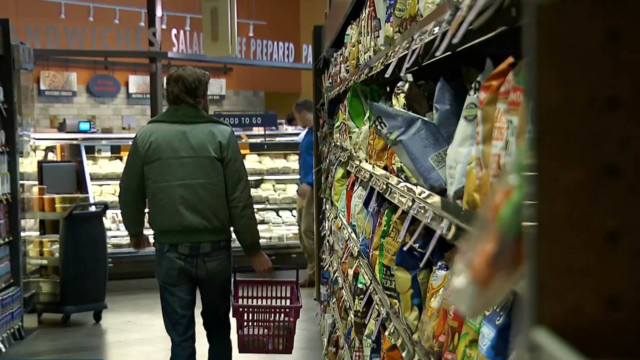Like many parents Alec Bourgeois wants to feed his kids healthy food, but most food labels on food in the United States don’t reveal how much sugar has been added to an item.
“You can think that you are making reasonable, healthy decisions and realize later that you are absolutely eating junk and it’s incredibly frustrating,” Bourgeois said in the kitchen of his Washington D.C. home.
He said he doesn’t mind if his kids have desert from time to time, but it is often difficult to tell what is really in foods.
“So much of the things that didn’t used to have sugar in them now have sugar in them,” Bourgeois said. “Like tomato sauce for example. There’s going to be some sugar in the tomato but they are also adding five or six tablespoons of sugar on top of that.”
The nutrition labels Americans are accustomed to have been around since the early 1990s.
A decision to update the label was made by the Obama administration – following a campaign led by the former First Lady, Michelle Obama.
“You as a parent and a consumer you should be able to walk into a grocery store, pick an item off the shelf, and tell whether it’s good for your family,” Obama said in 2014 while announcing the new initiative.
The labels highlight calorie count and portion size in bigger, bolder type and including how much sugar was added.

The new labels were to be on products by summer 2018, but now the Trump administration is putting the brakes on the changes.
In early June, the U.S. Food and Drug administration announced the new labels are being delayed, with no firm deadline for when companies will be required to carry them.
Executive Director at Center for Science in the Public Interest Michael Jacobson said the Food and Drug Administration has given in to pressure from food manufacturers.
“The Trump administration really listened to the food industry which would just as soon not have these labels,” Jacobson says, “Because companies that market sugary foods will have to put that information on the labels and their food won’t look as good.”
Food manufacturers say the proposed rules were unclear about how to calculate sugar and fiber totals, making compliance difficult.
In a statement to CGTN Pamela G. Bailey, President and CEO of the Grocery Manufacturers Association writes: “FDA’s common-sense decision will reduce consumer confusion and costs… FDA’s extension is both reasonable and practical.”
Jacobson says the decision puts US consumer’s health at risk.
“Diet has such a tremendous impact on health. Americans need to cut their calorie consumption, cut the saturated fat and sodium and added sugars. That will save thousands and thousands of lives,” Jacobson said.
Consumers like Bourgeois who were looking forward to the new labels are frustrated.
“It’s infuriating, this idea that the marketplace dictates, but if we don’t have information we can’t make informed decisions and the marketplace becomes a place where we get exploited,” he said.
 CGTN America
CGTN America

